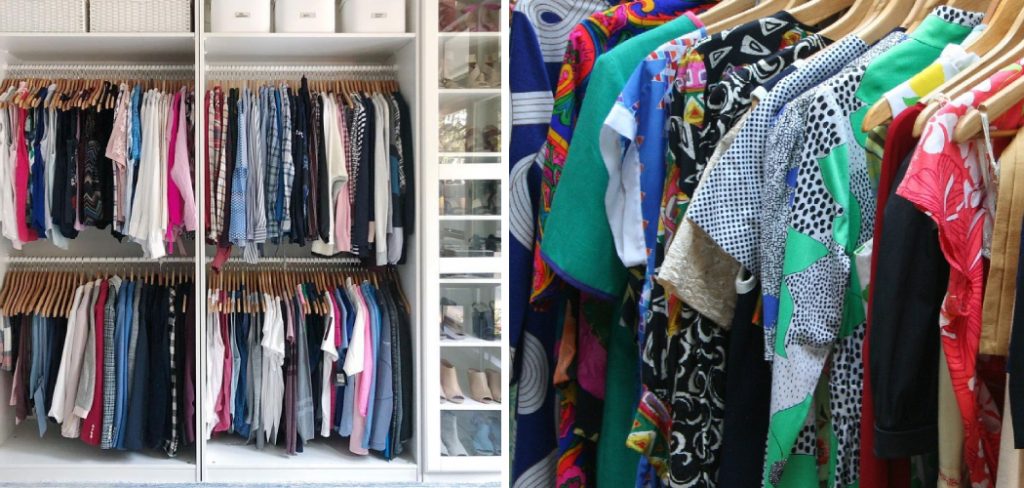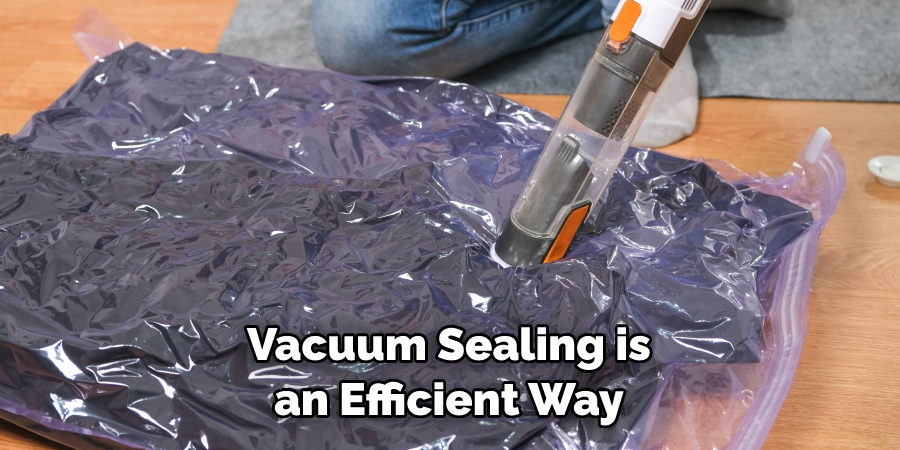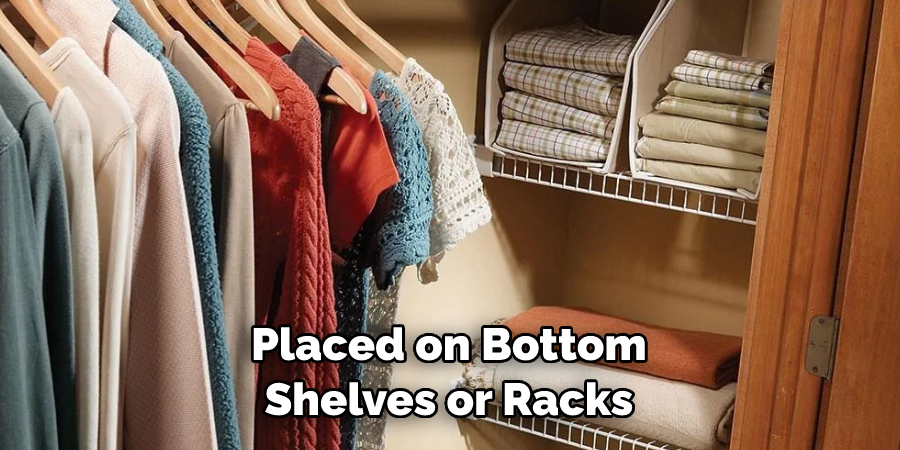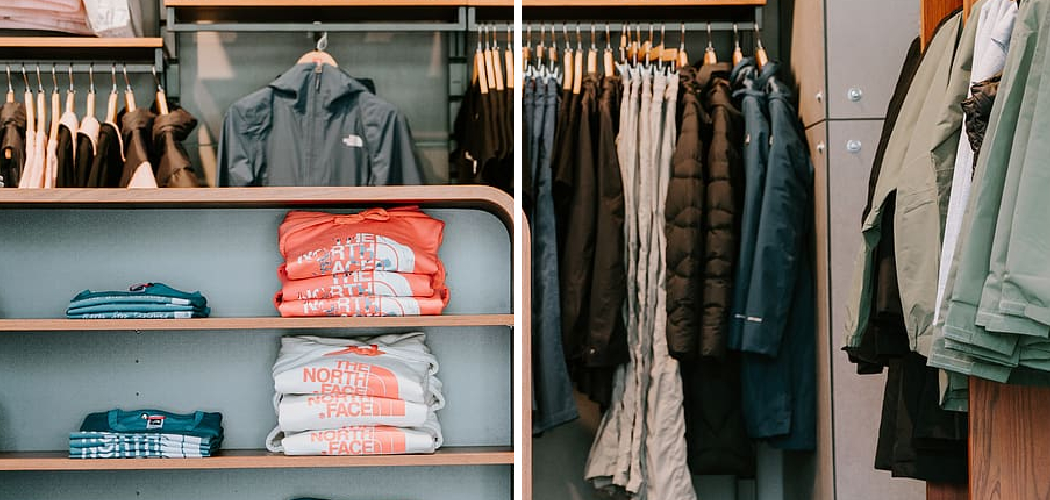When it comes to storing clothes in a storage unit, there is an art to it. It can be tricky to find the best way to pack and store your items so they remain undamaged over time. In this blog post on how to store clothes in storage unit, we’ll discuss tips for maximizing space efficiency and organizing clothing items so that they are safe from dirt, pests, and damaging weather conditions during long-term storage.

We’ll look at suitable packing materials for protecting fragile fabrics as well as how you should dispose of any large awkward or surplus pieces of furniture when necessary. Grab a pen and paper; it’s time to get organized!
Needed Materials
Before you start packing your items, make sure you have the right materials. The following is what we suggest:
- Boxes of Various Sizes and Shapes
- Plastic Storage Bins With Secure Lids
- Bubble Wrap or Other Cushioning Material
- Furniture Blankets for Bigger Items
- Labels and Markers
- Vacuum-seal Bags for Storing Clothing
11 Step-by-step Guidelines on How to Store Clothes in Storage Unit
Step 1: Sort Your Clothes
Start by sorting through all of the clothing items you want to store and decide what you will keep or discard. This will help you save time and space in your storage unit. This will also help you to keep track of what’s in storage and make it easier to find specific items when needed. It is important to note that when storing clothes, natural fabrics such as cotton and wool should be washed prior to storage.

Step 2: Wash Your Clothes
Ensure that all of your clothes are clean before storing them. Any dirt or stains left on clothing can damage the fabric during long periods in storage, so make sure to follow the washing instructions for each garment. But don’t use fabric softener, as this can make the fabrics stiff and difficult to fold.
Step 3: Inspect Your Clothes
Next, inspect all of your clothes for any signs of damage such as tears or loose threads. Anything that is not in good condition should be discarded rather than stored—it’s better to be safe than sorry! This is especially true for items like coats or jackets that are made from heavier fabrics, as the fabric can easily become damaged over time.
Step 4: Choose Suitable Packing Materials
Once you have sorted through and checked everything, it’s time to find suitable packing materials. Bubble wrap is a great choice for protecting delicate fabrics from dirt and moisture. Furniture blankets are ideal for larger items such as couches or chairs, while plastic storage bins with lids can be used to store clothes, linens, and other miscellaneous items.
Step 5: Vacuum-seal Clothing
Vacuum sealing is an efficient way of storing clothing without taking up too much space. It also helps protect garments from pests and dust during long periods in the unit. It is best to hang clothing in a vacuum-sealed bag prior to storage. This will help preserve the shape of the garment and keep any wrinkles at bay.

Step 6: Label Boxes
Label all boxes and containers clearly so you know what’s inside them when it’s time to unpack them later on. This will make things much easier! It’s best to use a marker and write on the box itself, as opposed to using tape or stickers which can easily come off. But if you do use tape or stickers, make sure to label the sides of the box as well.
Step 7: Pack and Stack Boxes
Start packing all of your clothing items into the chosen containers, making sure to fill empty spaces with cushioning material. Once everything is in place, stack the boxes up against the walls of the storage unit. It is best to store heavier items at the bottom and lighter items on top. This will help prevent any damage from occurring due to weight or shifting.
Step 8: Dispose of Unnecessary Furniture
If you have any large pieces that are not suitable for storage, make sure to dispose of them responsibly before storing your items. This will help save space in the storage unit and make it easier to organize everything. It is also important to note that furniture should be wrapped in blankets or other protective materials before being stored.
Step 9: Place Heavy Items on Bottom Racks
Any heavy boxes should be placed on bottom shelves or racks to avoid putting too much strain on the unit’s framework. It is best to use sturdy shelving units or storage racks if possible, as this will help keep everything organized and easily accessible. This is especially important for items like books, shoes, and other heavy objects.

Step 10: Cover Your Clothes
Once everything has been organized and packed away, cover all of your items with a tarp or other protective material. This will help keep the dust and dirt at bay. It is also a good idea to use silica gel packets or other moisture absorbing materials in the storage unit to help keep your items dry and protected.
Step 11: Monitor Your Unit
Regularly check in on your storage unit to make sure everything is intact and that no damage has occurred. If you notice any problems, contact the facility staff as soon as possible! It is also important to note that you should not store any food or perishables in the unit, as this could attract pests and other unwanted visitors.
Following these steps on how to store clothes in storage unit should help ensure that your garments remain safe while in long-term storage. Remember to choose good quality packing materials and label everything for easy access later on.

Do You Need to Use a Professional?
If you have a large amount of clothing to store, or if the items are particularly valuable, it might be worth hiring a professional storage service. This way, you can be sure that your clothing will remain safe and secure in your storage unit. Professional storage companies offer comprehensive services such as packing, loading and unloading for an additional fee.
Whether you choose to do it yourself or hire a professional, following these steps on how to store clothes in a storage unit should help make the process easier and more effective.
How Much Will It Cost?
The cost of storage can vary depending on the size of the unit that you need and the type of service that you choose. If you are planning to do it yourself, then the only costs will be for packing materials and any other items that you may need. Professional storage services typically charge a fee per item or based on the cubic footage of your unit.
Overall, storing clothes in a storage unit is an affordable way to free up space in your home or office without having to discard valuable garments. By following these steps and making use of quality packing materials, you can ensure that your clothing remains safe and secure until it’s time to unpack them again.
Frequently Asked Questions
Q: How Long Can You Store Clothes in a Storage Unit?
A: The length of time that you can store clothes in a storage unit depends on the type of climate control offered by the facility. Some climate-controlled units can maintain temperatures and humidity levels for longer periods of time, while other facilities may not offer any temperature regulation at all. It’s important to speak with a storage facility staff member to determine what is best for your needs.
Q: How Can I Protect My Clothes From Damage?
A: To protect your clothing from damage, make sure to use quality packing materials such as vacuum-seal bags and sturdy boxes or containers with lids. Additionally, it’s a good idea to cover everything with a tarp or plastic sheeting for extra protection against dust and dirt. Finally, inspect the unit regularly for signs of pests or water damage.
Q: What Are the Benefits of Using a Professional Storage Service?
A: The main benefit of using a professional storage service is that you can be sure your items will be packed and loaded safely and securely. They also often provide additional services such as climate control, humidity regulation, and 24-hour surveillance to protect your belongings. Additionally, they typically have insurance policies in place in case of any accidents or damage.
Q: What Are Some Good Tips for Storing Clothes in Storage Units?
A: Some good tips for storing clothes in storage units include packing items tightly together, using quality packing materials such as plastic bins and vacuum-seal bags, labeling everything clearly for easy access later on, covering all items with a tarp or plastic sheeting and visiting your unit regularly to
Conclusion
You now have all the tips and tricks you need to store your clothes in storage units successfully. From understanding which materials you should use to improve the protection of your clothing, to storing clothing properly with the utilization of cardboard boxes to make sure that the fabric stays safe – it’s all beneficial in helping keep your clothing safe during their stay.
Additionally, using a reputable storage unit with climate control can be beneficial as well, as it helps preserve the life of any delicate clothing items.
All in all, if you follow these steps on how to store clothes in storage unit when attempting to store your clothes in a storage unit, they’ll remain just as beautiful when you go to retrieve them. Hopefully, now that you understand how best to store your clothes, nothing will stop you from living an organized and clutter-free life right away!
